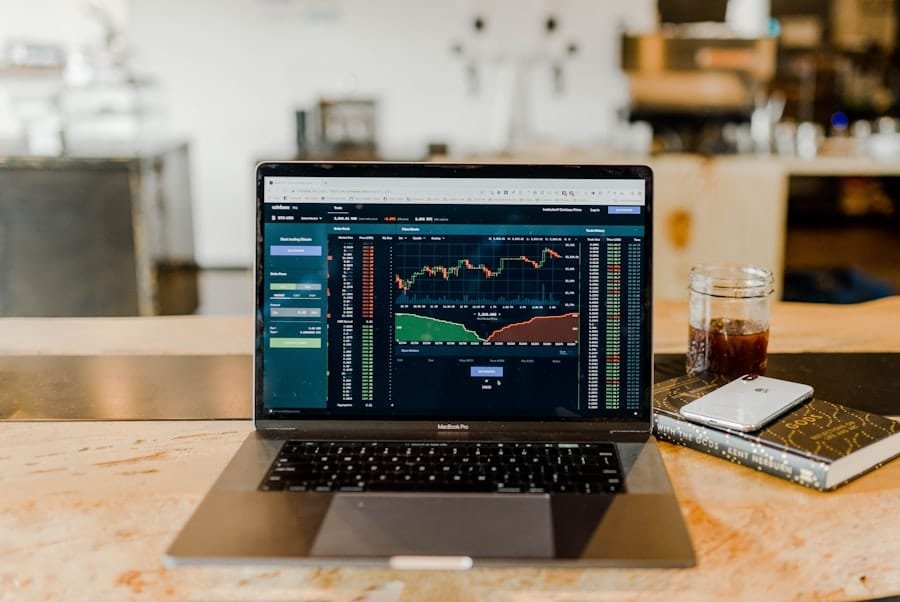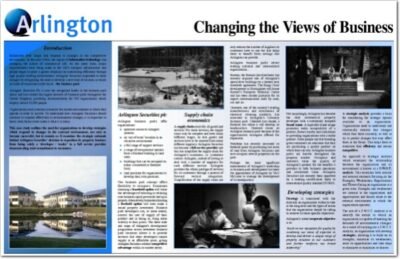Risk-adjusted return is a financial metric that evaluates the return of an investment relative to the risk taken to achieve that return. This concept is crucial for investors who seek to understand not just how much they can earn, but also the level of risk they must assume to achieve those earnings. Traditional measures of return, such as absolute return or total return, do not account for the volatility or uncertainty associated with an investment.
In contrast, risk-adjusted return provides a more nuanced view by incorporating the potential for loss and the variability of returns over time. The most common methods for calculating risk-adjusted return include the Sharpe Ratio, Treynor Ratio, and Jensen’s Alpha. Each of these metrics offers a different perspective on how well an investment compensates for its risk.
For instance, the Sharpe Ratio measures the excess return per unit of total risk, while the Treynor Ratio focuses on systematic risk as measured by beta. Understanding these distinctions is essential for investors who wish to make informed decisions based on their risk tolerance and investment objectives.
Summary
- Risk-adjusted return measures the potential return on an investment relative to the risk taken to achieve that return.
- Understanding risk-adjusted return is important as it provides a more comprehensive view of an investment’s performance.
- The calculation of risk-adjusted return involves adjusting the investment’s return for the level of risk taken, often using metrics such as the Sharpe ratio or the Treynor ratio.
- Factors affecting risk-adjusted return include the volatility of the investment, the time horizon, and the investor’s risk tolerance.
- Comparing investments using risk-adjusted return allows investors to make more informed decisions by considering both return and risk.
Importance of Risk-Adjusted Return
The significance of risk-adjusted return cannot be overstated in the realm of investment decision-making. Investors are often faced with a plethora of options, each with varying levels of risk and potential returns. By focusing on risk-adjusted returns, investors can better assess which investments are likely to yield the most favourable outcomes relative to the risks involved.
This approach encourages a more disciplined investment strategy, steering investors away from high-return but high-risk options that may not align with their financial goals. Moreover, risk-adjusted return plays a pivotal role in portfolio management. A well-constructed portfolio should not only aim for high returns but also consider the overall risk profile.
By evaluating investments through the lens of risk-adjusted returns, investors can optimise their portfolios to achieve a balance between risk and reward. This is particularly important in volatile markets where the potential for loss can be significant. Investors who prioritise risk-adjusted returns are better equipped to navigate market fluctuations and make strategic adjustments to their portfolios as needed.
Calculation of Risk-Adjusted Return

Calculating risk-adjusted return involves several methodologies, each tailored to different aspects of investment performance. The Sharpe Ratio is one of the most widely used metrics, calculated by taking the difference between the investment’s return and the risk-free rate, then dividing that by the standard deviation of the investment’s returns. This formula provides a clear indication of how much excess return an investor is receiving for each unit of risk taken.
A higher Sharpe Ratio suggests a more attractive risk-return profile. Another important metric is Jensen’s Alpha, which measures the performance of an investment relative to its expected return based on its beta. The formula for Jensen’s Alpha involves subtracting the expected return (calculated using the Capital Asset Pricing Model) from the actual return achieved by the investment.
A positive alpha indicates that an investment has outperformed its expected return given its level of systematic risk, while a negative alpha suggests underperformance. These calculations are essential for investors seeking to evaluate their investments comprehensively and make data-driven decisions.
Factors Affecting Risk-Adjusted Return
Several factors influence risk-adjusted returns, making it imperative for investors to consider these elements when evaluating potential investments. Market volatility is one such factor; during periods of high volatility, even investments with historically stable returns can exhibit increased risk levels. This fluctuation can significantly impact the standard deviation used in calculating metrics like the Sharpe Ratio, thereby altering perceptions of an investment’s attractiveness.
Another critical factor is the time horizon of an investment. Short-term investments may exhibit higher volatility and thus lower risk-adjusted returns compared to long-term investments that have had time to smooth out fluctuations. Additionally, economic conditions play a vital role; during economic downturns, even well-performing assets may experience declines in value, affecting their overall risk-adjusted performance.
Investors must remain vigilant about these external factors and adjust their strategies accordingly to maintain optimal risk-adjusted returns.
Comparing Investments Using Risk-Adjusted Return
When comparing different investment opportunities, utilising risk-adjusted return metrics allows investors to make more informed choices. For instance, two investments may offer similar absolute returns; however, their risk profiles could differ significantly. By applying metrics such as the Sharpe Ratio or Treynor Ratio, investors can discern which investment provides a better return relative to its inherent risks.
Consider two mutual funds: Fund A has an annual return of 10% with a standard deviation of 15%, while Fund B has an annual return of 12% with a standard deviation of 20%. While Fund B appears more attractive at first glance due to its higher return, calculating their Sharpe Ratios reveals a different story. If Fund A’s Sharpe Ratio is higher than that of Fund B, it indicates that Fund A offers a superior risk-adjusted return despite its lower absolute return.
This comparative analysis empowers investors to select investments that align with their risk tolerance and financial objectives.
Strategies for Maximizing Risk-Adjusted Return

To maximise risk-adjusted returns, investors can employ several strategies tailored to their individual circumstances and market conditions. Diversification is one of the most effective methods; by spreading investments across various asset classes, sectors, and geographical regions, investors can mitigate risks associated with any single investment or market downturn. A well-diversified portfolio can enhance overall returns while reducing volatility, leading to improved risk-adjusted performance.
Another strategy involves active management and regular portfolio rebalancing. By continuously monitoring investments and adjusting allocations based on performance and changing market conditions, investors can optimise their portfolios for better risk-adjusted returns. This proactive approach allows investors to capitalise on emerging opportunities while minimising exposure to underperforming assets.
Additionally, employing stop-loss orders can help protect against significant losses, further enhancing the potential for favourable risk-adjusted outcomes.
Limitations of Risk-Adjusted Return
Despite its advantages, relying solely on risk-adjusted return metrics has inherent limitations that investors must acknowledge. One significant drawback is that these metrics often rely on historical data, which may not accurately predict future performance. Market conditions can change rapidly due to unforeseen events such as economic crises or geopolitical tensions, rendering past performance less relevant in assessing future risks and returns.
Furthermore, different metrics may yield conflicting results when evaluating the same investment. For example, an investment might have a high Sharpe Ratio but a low Treynor Ratio due to its specific risk profile. This inconsistency can lead to confusion among investors who may struggle to determine which metric should take precedence in their decision-making process.
Therefore, it is essential for investors to use a combination of metrics and qualitative assessments when evaluating investments rather than relying solely on risk-adjusted returns.
Making Informed Investment Decisions
In navigating the complex landscape of investing, understanding and utilising risk-adjusted return metrics is paramount for making informed decisions. By evaluating investments through this lens, investors can gain insights into how well they are compensated for the risks they undertake. The importance of these metrics extends beyond individual investments; they play a crucial role in portfolio management and strategic asset allocation.
Investors must remain vigilant about the factors influencing risk-adjusted returns and be prepared to adapt their strategies accordingly. While these metrics provide valuable information, they should be considered alongside other qualitative factors and market conditions to form a comprehensive view of potential investments. Ultimately, by prioritising risk-adjusted returns in their decision-making processes, investors can enhance their chances of achieving long-term financial success while managing risks effectively.
When considering the concept of risk-adjusted return, it is crucial to also understand the importance of setting up a personal budget. This article on setting up a personal budget provides valuable insights into managing finances effectively to achieve financial goals. By creating a budget, individuals can better assess their risk tolerance and make informed investment decisions to maximise their risk-adjusted returns. Additionally, case studies such as Castrol and Patent Office offer real-world examples of companies that have successfully navigated risk to achieve sustainable growth.
FAQs
What is a risk-adjusted return?
A risk-adjusted return is a measure of the profit or loss on an investment that takes into account the degree of risk involved. It allows investors to compare the returns of different investments while considering the level of risk taken to achieve those returns.
How is risk-adjusted return calculated?
There are several methods to calculate risk-adjusted return, with the most common being the Sharpe ratio, the Treynor ratio, and the Jensen’s alpha. These ratios take into account the investment’s volatility, the risk-free rate, and the market risk premium to determine the risk-adjusted return.
Why is risk-adjusted return important?
Risk-adjusted return is important because it provides a more accurate measure of an investment’s performance by considering the level of risk taken to achieve the returns. This allows investors to make more informed decisions when comparing different investment opportunities.
What are the benefits of using risk-adjusted return?
Using risk-adjusted return allows investors to compare the performance of different investments on a level playing field, taking into account the risk involved. This helps investors to make more informed decisions and to better understand the trade-off between risk and return.
What are some limitations of risk-adjusted return?
One limitation of risk-adjusted return is that it relies on historical data and assumptions about future market conditions, which may not always be accurate. Additionally, different risk-adjusted return measures may produce conflicting results, making it challenging to determine the most appropriate measure for a specific investment.
 Changing the views of business (PDF)
Changing the views of business (PDF) 